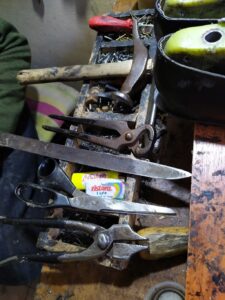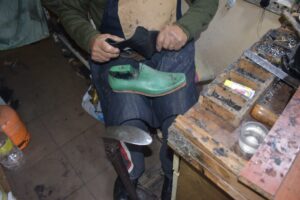In Shkodra and beyond, knowledge-making of traditionally decorated and pointed-toe shoes, called CARUQE, is a commonly known practice.
The shoe making process involves: Measuring the customer’s feet with a shoemaker’s gauge, choosing the model as desired (limited number of models), sorting the leather type (with defined color and composition), and cutting the uppers on the cutting dies to suit the model, attaching the sole as specifically designed to the customer’s proportions, assembly, sanding, applying the glue while heated cured, adhesive bonding of shoes and clamp fitting, attaching the linings of uppers and welt to the insole, fixing the sole and heel (shoe heel) with nails and glue as well as the pressing step. The final process is the finished last for fitting and shaping the footwear, for 24 hours at the least.
Making new shoes requires high craftsmanship while repairing is simpler. Repairs involve processes such as: loosening up footwear by shoe stretcher, stitching, glue fixing, and nailing.
The cutter’s role is very important in this process. Xhevdet Ceni is among the last cutters in Shkodra.




